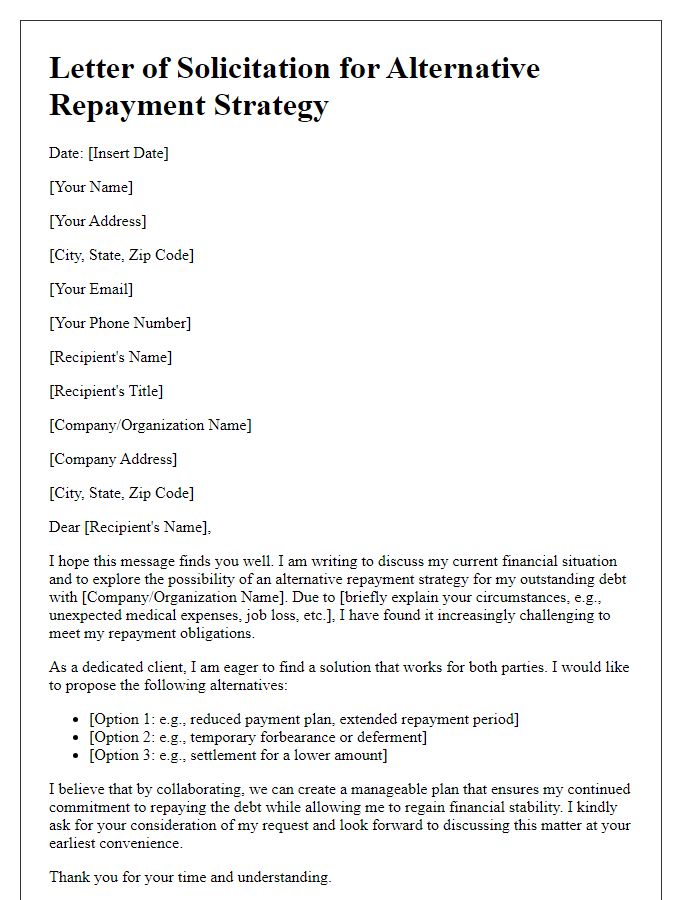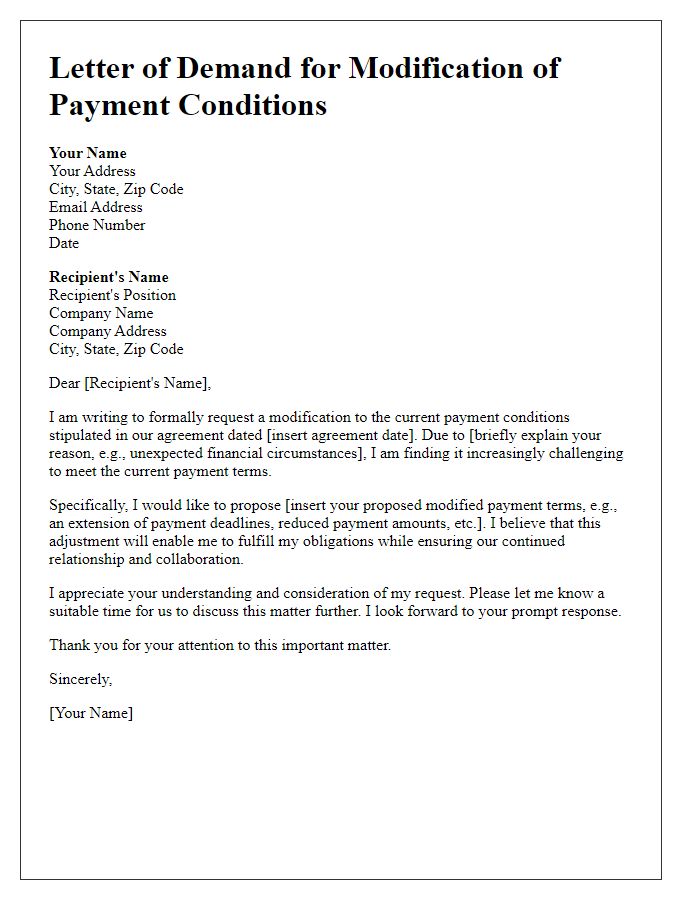Are you finding it difficult to keep up with your current repayment plan? You're not aloneâmany people are navigating similar challenges. In this article, we'll guide you on how to effectively write a letter requesting a new repayment plan that suits your financial situation better. Dive in to discover the essential steps and tips to make your request stand out!

Personal Information
Many individuals facing financial difficulties seek to request a new repayment plan from institutions or lenders. This can involve personal financial information, including but not limited to names, addresses, phone numbers, and account numbers. A detailed account of current financial status may also be provided, outlining income sources, expenses, and any extenuating circumstances contributing to the request. Specific lenders, such as banks or credit unions, often require formal requests under established guidelines, potentially including supporting documentation like pay stubs or bills. The goal is to propose a feasible repayment schedule that aligns with the individual's ability to pay, aiming for a mutually agreeable solution to manage outstanding debts effectively.
Account Details
Requesting a new repayment plan for outstanding debts can help manage financial obligations effectively. Clients must provide accurate account details, including account number (typically a unique identifier such as a 10-digit code), current balance (total due amount reflecting interest and fees), and previous payment history (documenting timely vs. missed payments). Specifics about income changes (such as job loss or reduced hours) and financial hardships (like medical emergencies or family issues) should be clearly outlined. This information aids creditors in assessing the application for a modified repayment schedule, potentially leading to more manageable monthly payments and alleviating stress from financial burdens.
Explanation of Circumstances
An unexpected financial hardship, such as a sudden job loss or a medical emergency, can significantly impact monthly payments on loans. A fixed monthly income may decrease abruptly, creating difficulty in meeting current repayment obligations. Essential expenses, like housing costs and medical bills, often take precedence, leading to potential default on loans if adjustments are not made. Crafting a new repayment plan, which may involve lower monthly payments or extended terms, ensures that obligations remain manageable while allowing borrowers to regain financial stability. Organizations, such as banks or credit unions, often have resources or programs available to assist individuals facing such circumstances.
Proposed Repayment Plan
In recent economic conditions, individuals may face financial challenges requiring adjustments to existing repayment plans. A proposed repayment plan can offer a structured approach to managing debts. For instance, a new plan may involve extending the repayment period from 12 months to 24 months, allowing for lower monthly payments. Key factors to consider include interest rates, which might be revised from 5% to 3%, and the total debt amount, which can range from $1,000 to $10,000. Addressing circumstances such as job loss or medical expenses will also be pivotal in negotiating terms. Establishing clear communication with the lending institution is essential for creating a feasible and mutually beneficial repayment agreement.
Contact Information
Many individuals facing financial hardship seek a new repayment plan to manage their debts more effectively. A well-crafted request should include specific contact information, such as relevant names and addresses of creditors, and policy numbers associated with the loans. The financial context should outline the reason for requesting the new repayment terms, referencing significant life events like job loss or medical emergencies that may have impacted financial stability. Personal details, including full name and telephone number, need to accompany the request to ensure prompt responses from financial institutions. This proactive communication helps borrowers explore alternatives, such as lower monthly payments or extended repayment periods, ultimately guiding them towards financial recovery.













Comments